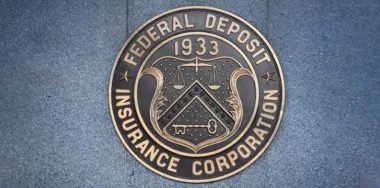America’s securities regulator has accused Binance and its ringleader Changpeng ‘CZ’ Zhao of engaging in “an extensive web of deception, conflicts of interest, lack of disclosure and calculated evasion of the law.”
On Monday, the U.S. Securities and Exchange Commission (SEC) filed 13 charges against Cayman-registered Binance Holdings Ltd, Delaware-registered BAM Trading Services—which operates the U.S.-facing Binance.US digital assets exchange—and CZ, Binance’s “founder, beneficial owner and CEO.”
The charges include operating exchanges, brokers, dealers and clearing agencies without registering with U.S. authorities; offering unregistered securities via token sales and lending products; failing to restrict U.S. customers from accessing the internationally based Binance.com; and misleading investors as to manipulative trading on the platform.
In a statement accompanying the charges, SEC chair Gary Gensler said CZ and Binance “misled investors about their risk controls and corrupted trading volumes while actively concealing who was operating the platform, the manipulative trading of its affiliated market maker, and even where and with whom investor funds and crypto assets were custodied. They attempted to evade U.S. securities laws by announcing sham controls that they disregarded behind the scenes so that they could keep high-value U.S. customers on their platforms.”
SEC director of enforcement Gurbir Grewal added that CZ and Binance “not only knew the rules of the road, but they also consciously chose to evade them and put their customers and investors at risk – all in an effort to maximize their own profits … Those risks and conflicts are only heightened by the Binance platforms’ lack of transparency, reliance on related-party transactions, and lies about controls to prevent manipulative trading. Despite their years-long efforts to not ‘be held accountable,’ today’s complaint begins the process of doing so.”
The SEC is seeking disgorgement of all ill-gotten gains along with prejudgment interest and civil money penalties. The SEC further wants the U.S. District Court for the District of Columbia to order temporary and preliminary injunctive relief, including “asset freezes, a verified accounting, repatriation of assets” and the production of more internal Binance documents.
The SEC also seeks to permanently enjoin CZ and Binance’s various entities from engaging in any security-related activities and to permanently bar CZ from acting as an officer or director of any securities issuer.
Binance issued a statement claiming to be “disheartened” by the SEC’s charges, which the exchange claims were filed despite “extensive good-faith discussions to reach a negotiated settlement.” Binance claimed that “the SEC’s real intent … appears to be to make headlines.” Binance issued the standard batch of non-denial-denials while insisting it would “defend our platform vigorously.”
Binance issued a similarly half-baked retort in March in reaction to a U.S. Commodity Futures Trading Commission (CFTC) suit that alleged the exchange had taken a “calculated, phased approach” to violating U.S. commodities regulations. The CFTC cited numerous internal communications in which top Binance execs openly admitted flouting anti-money laundering/’know your customer’ requirements and laughed off evidence of terrorist groups using the exchange to transmit funds.
Not laughing are Binance customers, who withdrew over $900 million from the exchange on Monday.
Hell hath no fury like a CEO scorned
Among the SEC filing’s most interesting revelations is that the first two CEOs of Binance.US—Catherine Coley and Brian Brooks—are cooperating with the investigation.
In March, following the CFTC suit, Reuters reported that Coley had hired a lawyer to represent her in the CFTC investigation, despite not being named in the CFTC lawsuit. Meanwhile, Brooks lasted all of three months in the job after taking over from Coley in spring 2021, allegedly over his realization that his job was a sham.
With both Binance.US CEOs having left under less than ideal circumstances, it’s not hard to imagine them opening up their vaults of internal communications, which must have CZ sweating like an extra in Cool Hand Luke.
Leaving (not leaving) on a jet plane
Since Binance’s 2017 launch, the SEC says the dot-com exchange regularly solicited U.S. customers—“at first overtly and later furtively”—with the company estimating its U.S. customer base at 1.47 million by August 2019. Of these, over 3,500 were designated as VIPs.
Binance’s understanding that it was operating without U.S. permission was made clear in a December 2018 communication from Binance’s then-chief compliance officer to another compliance staffer. To wit: “we are operating as a fking unlicensed securities exchange in the USA bro.”
One month prior, a Binance consultant delivered a presentation to CZ and other senior staff on the infamous ‘Tai Chi’ strategy, which involved the creation of a U.S.-registered exchange that “will become the target of all built-up enforcement tensions” and “[i]nsulate Binance from legacy and future liabilities.”
This strategy would also allow Binance to “serve as an OTC counterparty on the U.S. platform to sell crypto assets for fiat currency, thereby giving Binance ready access to fiat currency without having to separately establish a bank account.”
Meanwhile, Binance would publicize a “Howey Test Asset-Evaluation framework” to give the impression that it was properly vetting tokens for possible securities violations. Binance would also engage with the SEC regarding “formation or acquisition of a broker/dealer or alternative trading system (ATS), with no expectation of success and solely to pause potential enforcement efforts.”
Binance’s compliance chief later confirmed internally in October 2020 that “we do not want .com to be regulated ever.”
ViPN
Binance later “implemented much of the Tai Chi Plan,” leading to the launch of Binance.US in 2019. CZ encouraged the use of virtual private networks (VPNs) by U.S. customers and instructed U.S. VIPs to update their KYC info to omit any U.S. nexus.
As CZ told senior staff in June 2019: “We don’t want to lose all the VIPs which actually contribute to quite a large number of volume. So ideally we would help them facilitate registering companies or moving the trading volume offshore in some way—in a way that we can accept without them being labeled completely U.S. to us.”
Later that month, CZ addressed how to retain non-VIP U.S. customers via similar KYC obfuscation, while cautioning that “the message needs to be finessed very carefully because whatever we send will be public. We cannot be held accountable for it.” CZ stated his goal was “to reduce the losses to ourselves, and at the same time to make the U.S. regulatory authorities not trouble us.”
By March 2020, an internal presentation indicated that Binance.com had retained 159 U.S. VIPs representing nearly 70% of global VIP trading volume. By May 2021, U.S. VIPs still accounted for 64% of Binance.com’s VIP volume.
Reward trumps risk
The 2019 announcement of the imminent launch of Binance.US was accompanied by Binance.com changing its terms of service to explicitly prohibit U.S. customers. The aforementioned consultant warned the company not to link one with the other, as “that would suggest both that Binance is aware of previous violation and that BAM [Trading] and .COM are alter egos of each other coordinating the work.”
The SEC follows up on this by noting that the ‘service-level agreements’ between Binance and BAM weren’t signed until months after Binance.US launched. The SEC also details the relative lack of authority that Binance.US ‘boss’ Coley had over the exchange she was supposed to be running.
‘BAM CEO B’ (Brooks) similarly stated that the “level of … connection” between Binance and BAM was a “problem” that he tried but failed to get under control.
Through January 2020, CZ’s approval was required on any BAM expenditures over $30,000. The SEC details one BAM request for CZ’s approval on an $11,000 purchase of Binance-branded hoodies.
The SEC notes that Binance.com continued to control BAM Trading data offshore, and “at least through much of 2021, BAM Trading employees could not obtain certain real-time trading data for the Binance.US Platform without Zhao’s personal approval.”
Free reign
The Wall Street Journal previously reported that Coley had expressed alarm over the fact that Binance.com execs had more control than her over bank accounts ostensibly under the control of Binance.US. Hundreds of millions of dollars were transferred out of these U.S. accounts without Coley’s advance knowledge to companies in the Caymans and Seychelles under CZ’s control.
Interestingly, just hours before the SEC’s charges were filed, Reuters identified the Binance exec with Binance.US account privileges as Guangying Chen, a close associate of CZ. Chen has also served as director of Sigma Chain since September 2019 (more on Sigma’s role in due course).
The SEC reveals that Binance had from the start required Zhao “and/or [Chen] have signatory authority” over these U.S. bank accounts. Coley warned that having a “non-US resident non-employee on the bank applications … will be a red flag for regulators.” Coley suggested that “[w]e really only need [BAM Trading’s Finance Director] on client account as that’s the only account regulators will be looking at.”
As of May 2023, CZ retained signatory authority over BAM bank accounts holding Binance.US customer funds. Also, through at least December 2022, Binance was the designated custodian of Binance.US customer tokens. Internal communications spell it out plainly: “.com is the custodian .us uses” and “CZ control[s] the wallet.”
As the SEC observes, Binance.US customers “have no agreement with either BAM Trading or Binance relating to the custody of crypto assets that they deposit and store through the Binance.US Platform.” CZ and Binance have “free reign to handle billions of dollars of crypto assets that customers have deposited, held, traded, and/or accrued on the Binance.US Platform with no oversight or controls to ensure that the assets are properly secured.”
An audit firm tasked with vetting BAM’s financial statements expressed unease at the lack of insight that Binance.US had into the nearly $1.8 billion in assets it purported to hold on behalf of its customers at the end of 2022. Binance.US “is dependent on the .COM custodian to tell them the addresses holding the assets, or other relevant metrics … This makes it very difficult to ensure the Company is fully collateralized at specific points in time.”
The SEC adds that, while BAM “has obtained more control” over clearing and settlement functions over time, “at least as of June 3, 2023, Binance continues to be involved in the custody and control of Binance.US Platform digital wallets and crypto assets therein.”
CE-no
In 2020, Coley launched what she called ‘Project 1776’ aimed at Binance.US restoring some ‘independence’ from Binance.com. These plans were accelerated later that year after Reuters broke the story of Binance’s ‘Tai Chi’ strategy.
Coley’s growing rebelliousness led to CZ deciding to replace her with Brooks in early 2021. Note that this is the first time it’s been confirmed that Coley didn’t leave of her own accord but was forced out due to CZ’s desire for a more pliant puppet.
Brooks may have taken the job with the goal of being his own man but it “became clear to me at a certain point was CZ was the CEO of BAM Trading, not me.” Brooks was “overruled” on all key decisions and that “all of the things that we had previously agreed and had worked on for 80 days were suddenly repudiated with no further discussion, and on that day, I realized, huh, I’m not actually the one running this company.”
Commingling, schommingling
The CFTC suit revealed the existence of hundreds of CZ-owned ‘house accounts’ via which CZ traded against Binance customers, in addition to accounts belonging to CZ-controlled market-makers Merit Peak and Sigma Chain. The SEC reiterates that CZ’s insistence that Binance.US onboard these market-makers “placed Zhao’s financial interests at odds with” those of Binance.US customers.
The SEC quotes Brooks testifying that “our customers couldn’t, you know, clear orders without the presence of those makers on our platform … it suggested that the company was, in fact, heavily dependent on CZ, not just as a control person but also as an economic counterparty and that is problematic, so I thought we needed to look into de-platforming them.”
Disturbingly, the SEC observes that Merit Peak’s U.S. bank account served as a ‘pass through’ account, receiving “over $20 billion that included customer funds” from both Binance.US and Binance.com. Customers were never informed of this movement of their funds. Sigma Chain, meanwhile, used $11 million from one of its accounts “to purchase a yacht.”
Predictably, the SEC observes that “from May 2020 to February 2022, Alameda Research, the trading firm associated with FTX founder Sam Bankman-Fried, was often the [Binance.US] OTC Desk’s only counterparty vis-à-vis BAM Trading customers.”
Rub-a-dub
Binance.US heavily promoted a zero-tolerance for ‘wash trading,’ aka pointless back-and-forth trades of digital assets between related parties intended to fraudulently manipulate an asset price. Yet the SEC says BAM “had no controls to monitor for and prevent manipulative trading” on Binance.US from its September 2019 launch through at least February 2022.
BAM also cited artificially boosted trading volume on Binance.US without informing the public of “the extensive nature of the wash trading that they knew existed” on the exchange. The Binance staffer tasked with ‘market surveillance’ stated flat out that their team didn’t monitor for wash trading, front running or spoofing.
Much of this wash trading occurred through “dozens” of user accounts “affiliated with Sigma Chain.” In June 2020, as Binance.US market makers slowed their trading volume, Coley complained that these Sigma accounts needed to be more “consistent” with their volume, noting that these accounts had “been up to 50% for us before.”
The Sigma accounts’ wash trading occurred in “a strategic pattern” coinciding with three critical periods: the 2019 launch of Binance.US, the listing of new tokens on Binance.US, and the months leading up to BAM’s seed funding round in September 2021.
On September 25, 2019, the day after Binance.US launched, wash trades linked to Sigma- and CZ-controlled accounts “constituted more than 99% of the initial hour of trading volume in at least one crypto asset.” By day’s end, these accounts were responsible for nearly 70% of that same token’s total volume.
In 2022, between January 1 and June 23, Sigma accounts “engaged in wash trading in 48 of 51 newly listed crypto assets.” From June 4-August 31, 2021—the period preceding BAM’s equity offering—Sigma accounts “repeatedly wash traded” 51 of the 58 tokens available to trade on Binance.US at the time.
Throughout, despite their knowledge of what was happening, BAM took no action to stop the fraud. Nor did they say anything publicly to counter the rosy picture of trading volume they presented to the public.
Howey doin’?
The SEC notes that Binance helped finance its 2017 launch via the $15 million initial coin offering (ICO) of its in-house Chuck E. Cheese token BNB. The SEC believes BNB is an unregistered security because its value was predicated on the success of the exchange. The SEC also confirmed that U.S. investors participated in the ICO.
CZ directed Binance.US to list BNB on its exchange, despite knowing that this move created a significant risk of the SEC taking action against it. The SEC cites internal communications in which Binance C-suite execs claim CZ was “willing to take the legal risk” due to the potential financial reward. The execs added that creating Binance.US had “already costed [CZ] an arm/leg, he’s not gonna hold back on getting that rev[enue] back somehow.”
Binance’s chief compliance officer later observed that Coley had advised against listing BNB on Binance.US but that CZ had brought her into a room “to strongarm a [BNB] listing,” which Binance.US did in September 2019.
The SEC says BNB, along with BUSD (the Binance-branded stablecoin that until recently was produced in partnership with Paxos Trust), as well as Binance’s BNB Vault and Simple Earn programs, and BAM’s ‘staking-as-a-service program, are all unregistered public offerings of securities.
Binance and BAM actively marketed these securities to customers and “used the means and instrumentalities of interstate commerce,” including accepting payments for these securities through U.S. bank accounts.
Both CZ and Binance have repeatedly promoted BNB’s investment potential over the years, effectively ticking all the boxes on the Howey test for identifying what is or isn’t a security. The Binance Whitepaper repeatedly referred to ICO participants as ‘investors’ and promoted CZ and other founders as being instrumental in Binance becoming a success.
Binance also pledged to repurchase and ‘burn’ half of all BNB over time in order to boost the value of remaining tokens. As CZ himself put it in July 2019, “financially, that works the same way as a dividend economically.”
BUSD comes in for a kicking due to Binance pooling and investing the assets that customers used to purchase stablecoins, heavily promoting the profit-earning potential of the Binance-directed BUSD Reward Program.
The Simple Earn and BNB Vault programs are regularly marketed as profit-making opportunities. As recently as April 2023, Binance was promoting profits of 18.9% for lending a particular token. And Binance.US promoted its Staking Program in a fashion reminiscent of rival Kraken, which resulted in the latter paying a $30 million penalty and agreeing to halt all such activities.
They’re ALL securities
The SEC isn’t satisfied with knocking back a few Binance-specific tokens or programs. The regulator notes that a variety of assets listed on Binance, including but not limited to SOL, ADA, MATIC, FIL, ATOM, SAND, MANA, ALGO, AXS, and COTI, “are offered and sold as investment contracts, and thus as securities.”
The SEC offers a token-by-token argument for why each of the above tokens are securities, while observing that Binance has also listed “crypto assets that have been the subject of prior SEC enforcement actions based upon their status as crypto asset securities, including but not limited to AMP (the AMP token), REP (the Augur token), UST (the TerraUSD token), and TRX (the token associated with the Tron network).”
The SEC didn’t say it—and BTC and ETH maximalists won’t like it—but the day is coming when these tokens will also find themselves tarred with the unregistered securities’ scarlet letter. In ETH’s case, the smoking guns are the extensive pre-mine and switch to a proof-of-stake consensus mechanism. For BTC, it’s the airdropping of new tokens that conform to the wholesale butchering of the Bitcoin protocol by BTC Core developers midway through the last decade.
In a potentially ominous note, the SEC has quietly purged most of former director William Hinman’s biographical data from the regulator’s website. In 2018, Hinman famously gave a speech in which he claimed that BTC and ETH weren’t securities, igniting a controversy over whether his opinion was his own or that of the SEC as a whole.
The other shoe
The fact that both the SEC and CFTC have provided clear evidence of flagrant corruption at nearly every level of Binance’s leadership begs the question: when will the U.S. Attorney’s Office for the Southern District of New York—America’s ultimate financial watchdog—drop its own criminal charges against CZ & Co.?
It’s not as if the Department of Justice doesn’t have the tools at its disposal. The U.S. Racketeering Influenced and Corrupt Organizations (RICO) Act requires only that two individuals hatch a criminal plan and then take a single step towards realizing that plan. The SEC and CFTC suits offer clear and compelling evidence of this from CZ’s own words.
The DoJ may have anticipatory saliva dripping from its open jaws but appears content to wait until CZ travels through some particular jurisdiction before clamping its teeth down.
In the meantime, exchanges such as Coinbase—which has embarked on an ill-advised ‘come at me, bro’ legal strategy in its regulatory dealings—are likely next in the SEC’s crosshairs. While Coinbase has begun taking steps to geographically diversify its operations, its leadership—unlike CZ—remains firmly rooted on U.S. soil.
And with Coinbase increasingly reliant on questionable revenue streams that resemble those that the SEC is targeting Binance for offering, a similar raft of SEC charges could spell lights out for CEO Brian Armstrong (who dumped another $1.7 million worth of his stock last week). Coinbase shares lost 9% of their value on Monday, falling another 1% after-hours.
Good thing Brian’s working on an unrelated longevity project, as it will give him more time with which to plot his revenge.
Follow CoinGeek’s Crypto Crime Cartel series, which delves into the stream of groups—from BitMEX to Binance, Bitcoin.com, Blockstream, ShapeShift, Coinbase, Ripple,
Ethereum, FTX and Tether—who have co-opted the digital asset revolution and turned the industry into a minefield for naïve (and even experienced) players in the market.
New to blockchain? Check out CoinGeek’s Blockchain for Beginners section, the ultimate resource guide to learn more about blockchain technology.







